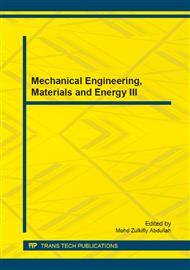p.559
p.563
p.569
p.574
p.578
p.583
p.587
p.594
p.599
Utilization of Improved RBF Network in Modeling of Wave Energy Absorption System
Abstract:
Energy self-supply is one of the most important problems, and there are many undesirable energy difficulties when carrier keeps working underwater, and. A method based on inertial pendulum has been presented, but the model of wave energy absorption efficiency which is a significant parameter is strongly nonlinear and difficult to be gained. A method based on radial basis function (RBF) neural network is adopted to model in time domain. To prevent the problem that structure and parameters of neural network are hard to be tuned, improved RBF network based on particle swarm optimization (PSO) is proposed. The results obtained by presented method and by simulation software ADAMS are compared, which validate the method used to be correct and make basis on future research.
Info:
Periodical:
Pages:
578-582
Citation:
Online since:
December 2013
Authors:
Price:
Сopyright:
© 2014 Trans Tech Publications Ltd. All Rights Reserved
Share:
Citation:


